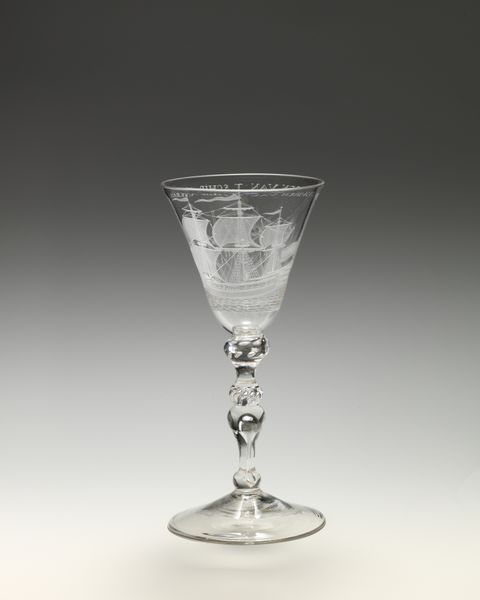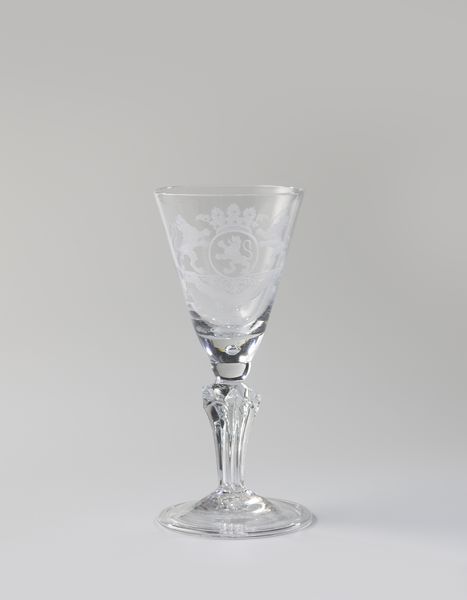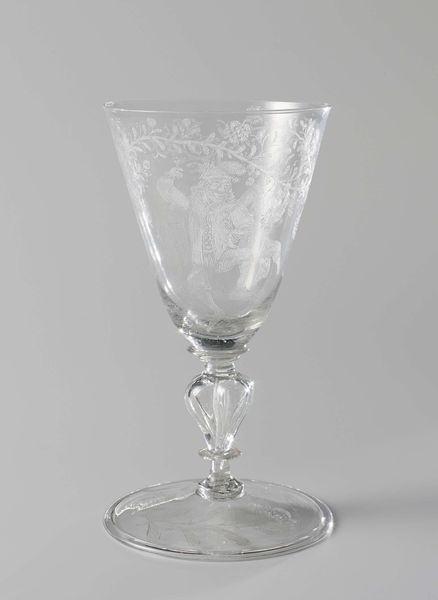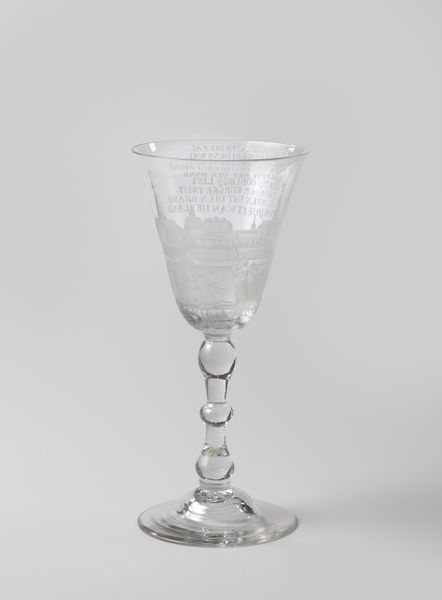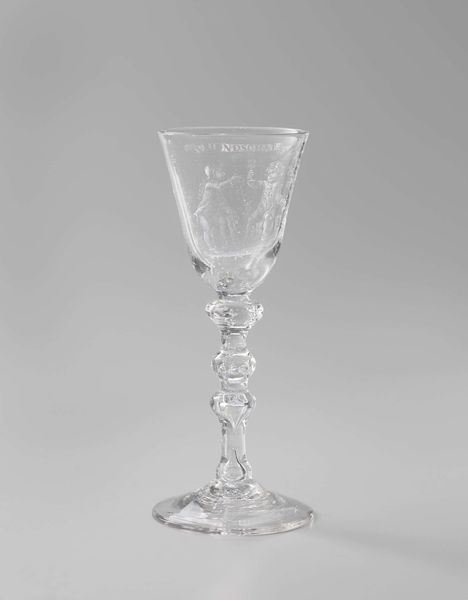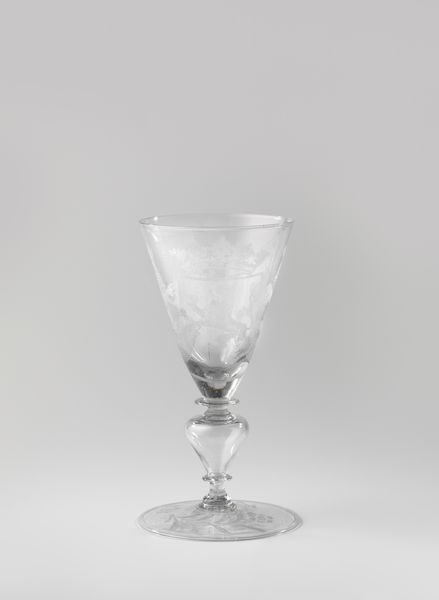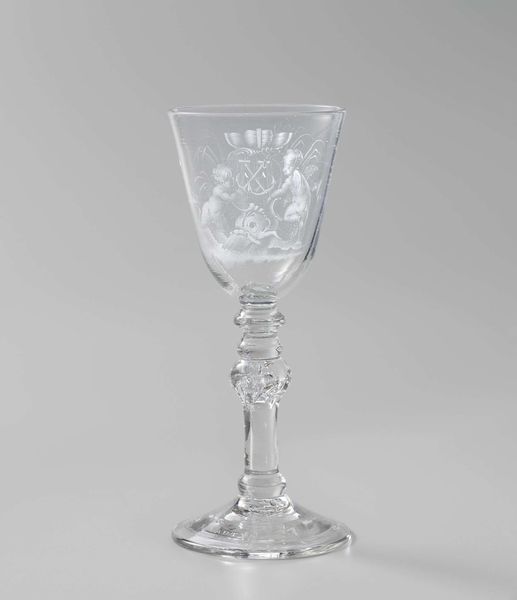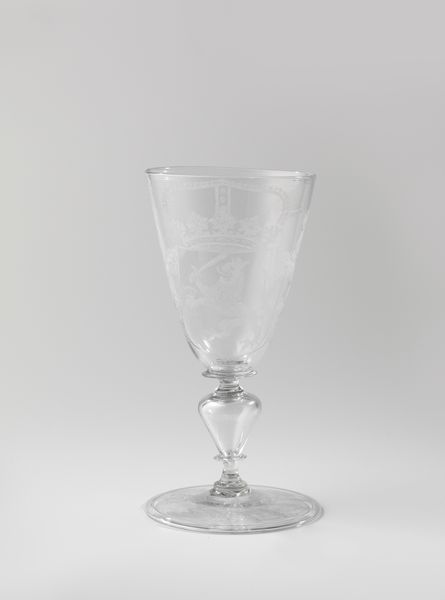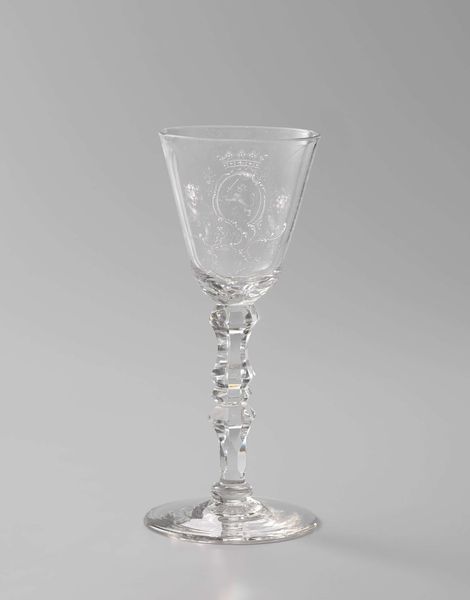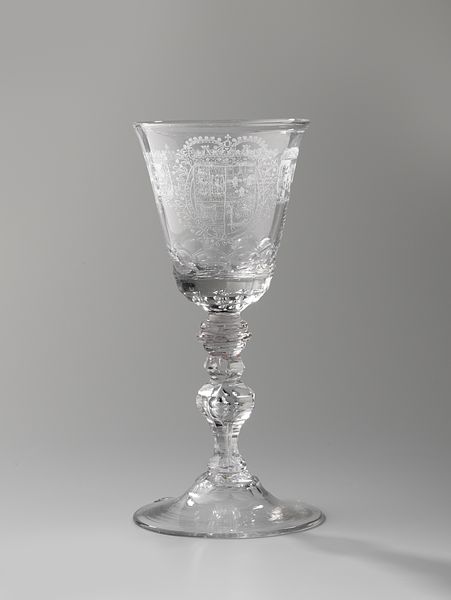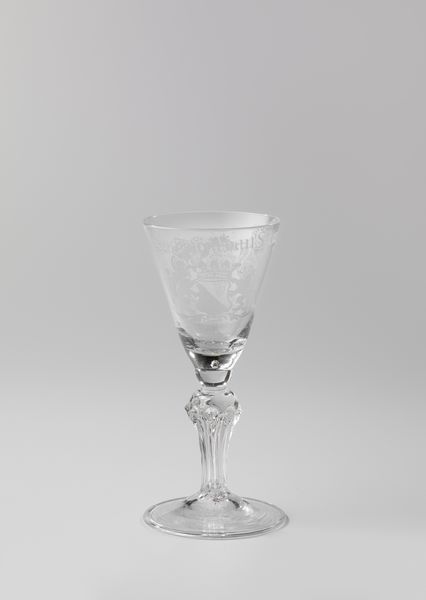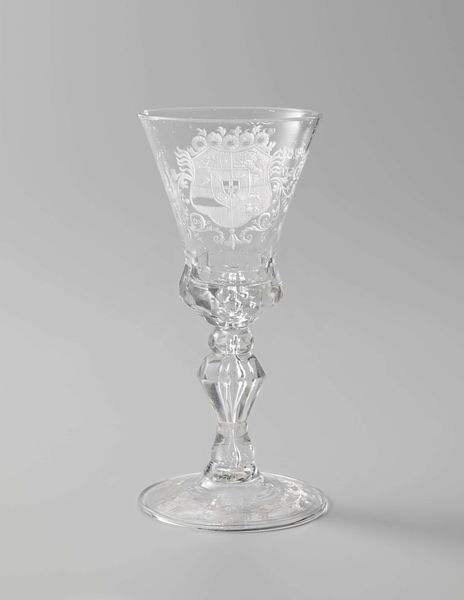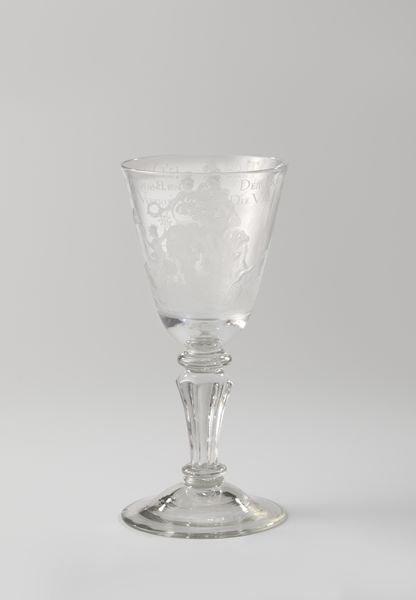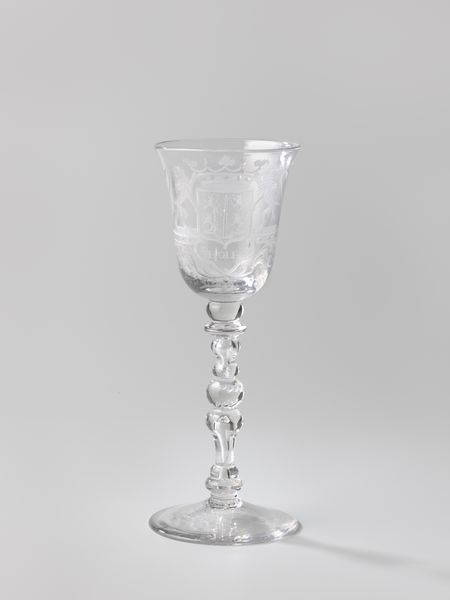
Dimensions: height 21.9 cm, diameter 9.5 cm, diameter 9.5 cm
Copyright: Rijks Museum: Open Domain
Curator: Here we have "Bokaal met de kerk te Rijnsaterwoude," a stemmed glass, likely for wine, etched by an anonymous artist around 1765. It’s part of the Rijksmuseum's collection. It feels surprisingly modern in its elegance, even Baroque. Editor: Indeed! I am immediately struck by the stark simplicity against its potential grandeur. It is essentially clear, but that only amplifies the intricate, almost lace-like detailing etched onto its surface. It is beautiful! Curator: That fine detail tells us so much. Glass etching was emerging in its full possibilities in this period and would have demonstrated wealth and taste, something not available to the broader public. The vessel shows a very stylized, probably recognizable, architectural form on its facade, while also bearing lettering; so it may be memorializing someone of prominence, an institution, or a public good tied to that very church depicted there. Editor: It reads almost like a propaganda vessel! This particular way that it depicts space has symbolic associations, of course: glasses are about public toasts, which connect the private celebration with wider, externalized sentiment. Here, it seems like it brings awareness to a building for the community—it speaks of both piety and civil engagement in ways that elevate the purpose of architecture. It is hard to read that engraving… Curator: Ah, I have that in translation for us: it wishes the village, through divine favor, will flourish thanks to the wisdom of its governing officials. Essentially, a civic toast enshrined in glass! A rather beautiful message, as relevant today as it was then, if you look beneath the overt reference to “divine favour”, right? Editor: It certainly suggests how integrated religious faith was in 18th-century society— inextricably from everyday gestures! Such a piece gives material expression to communal hope, and subtly implies social norms and roles through what's memorialized. Curator: This piece encourages us to ponder our communal efforts to envision progress...a tall order, to ask a vessel, to speak truth in public! Editor: And that even ordinary objects might carry resonant narratives that tie us to those who came before us...a sentiment well-suited to our present moment!
Comments
No comments
Be the first to comment and join the conversation on the ultimate creative platform.
